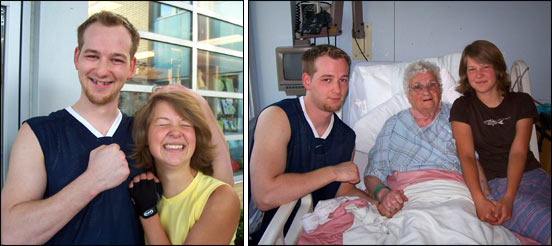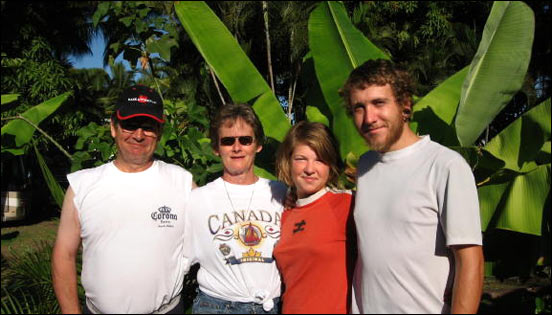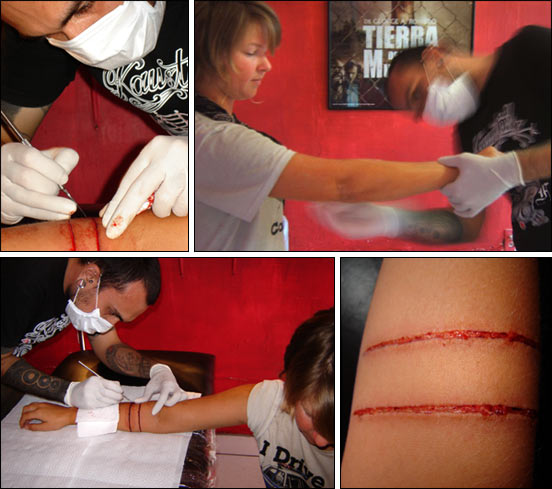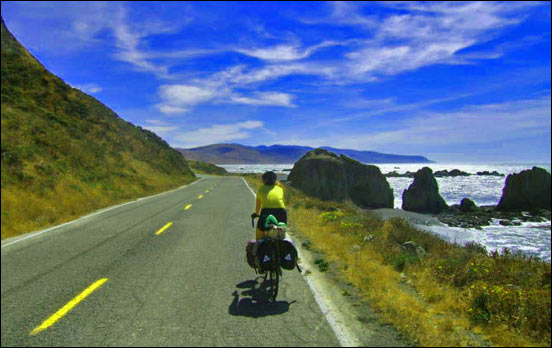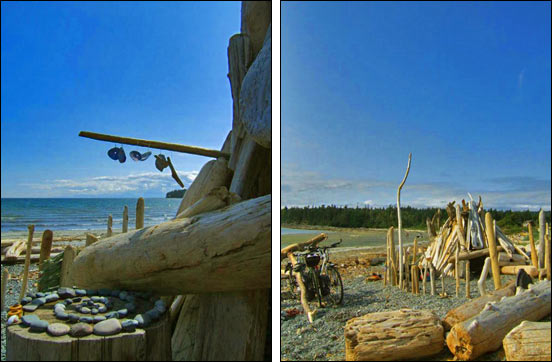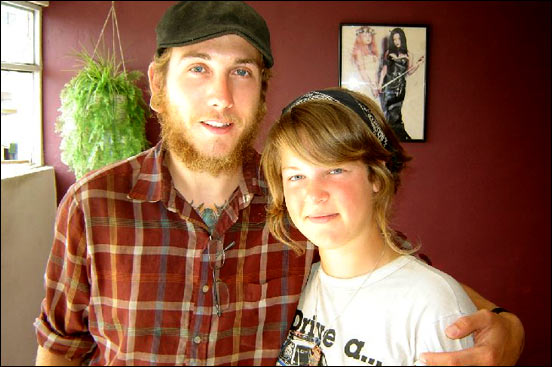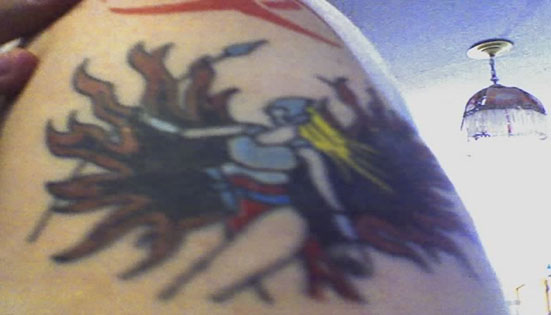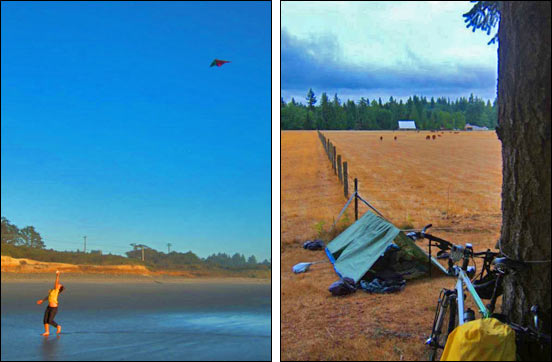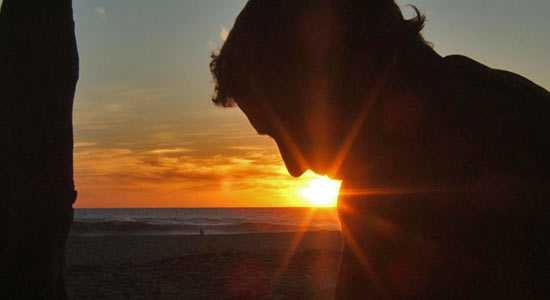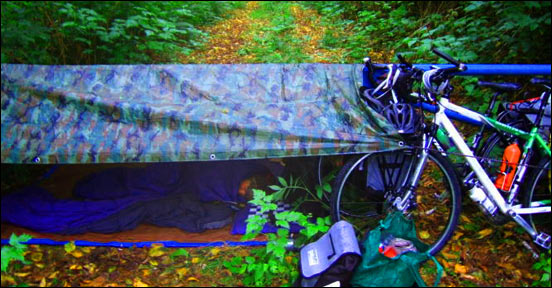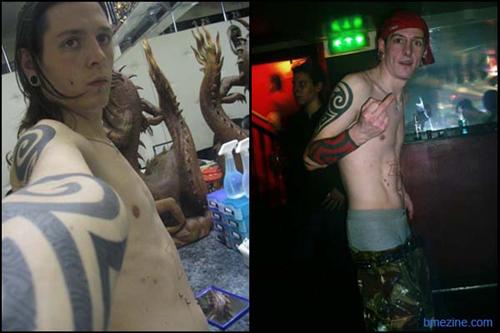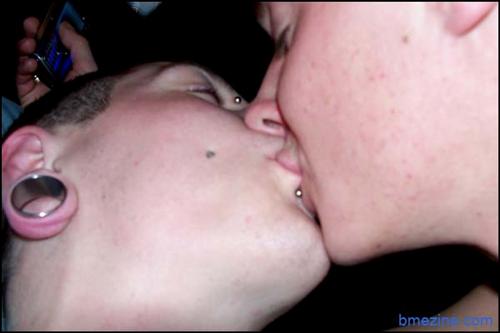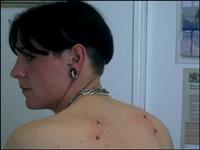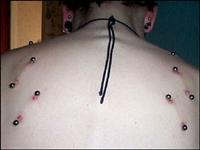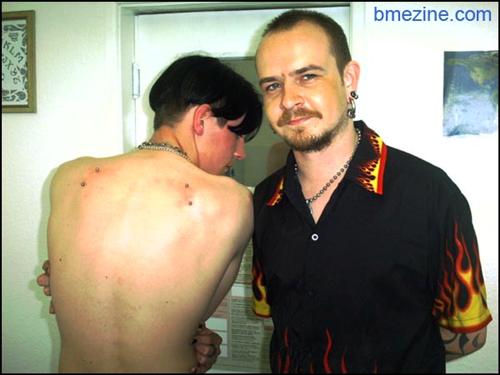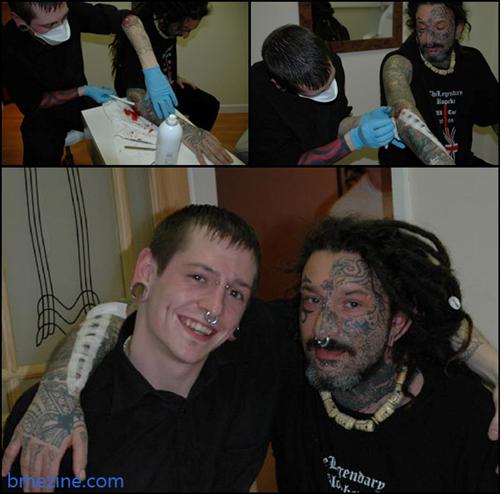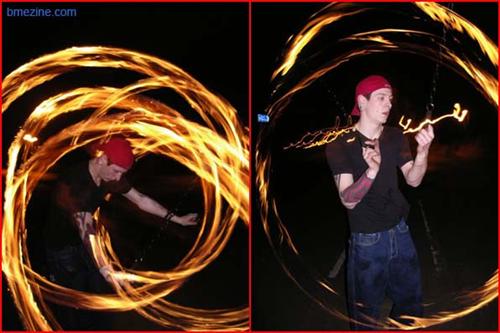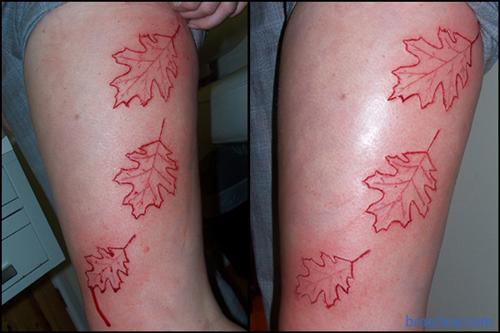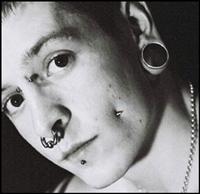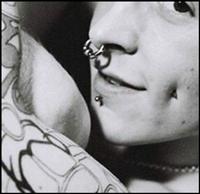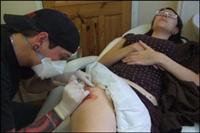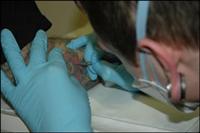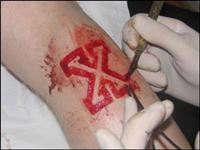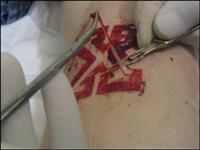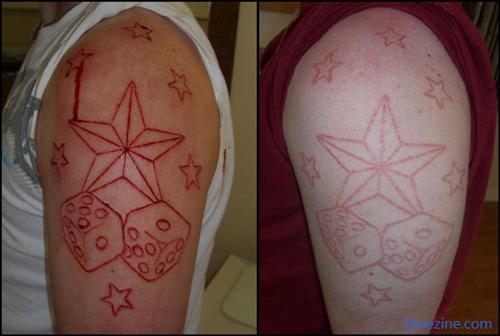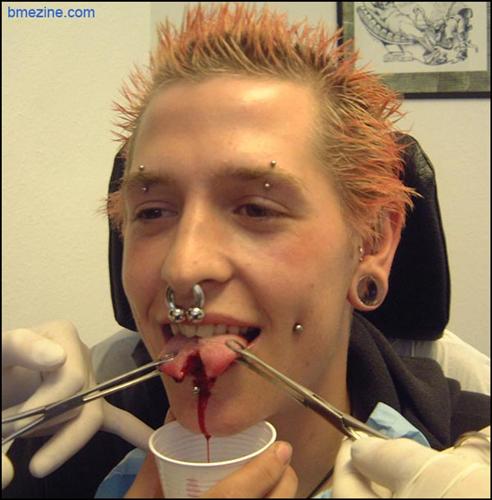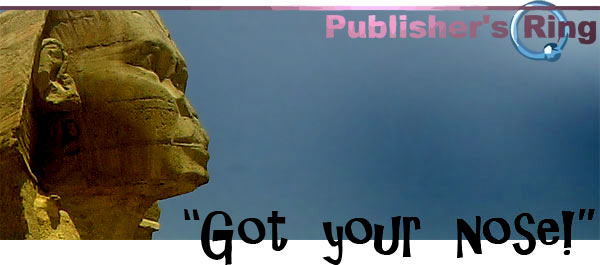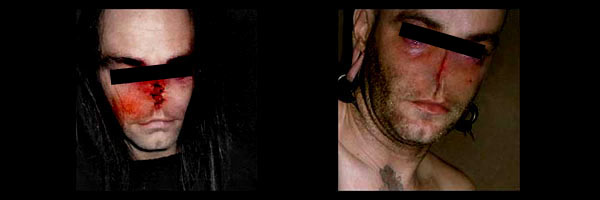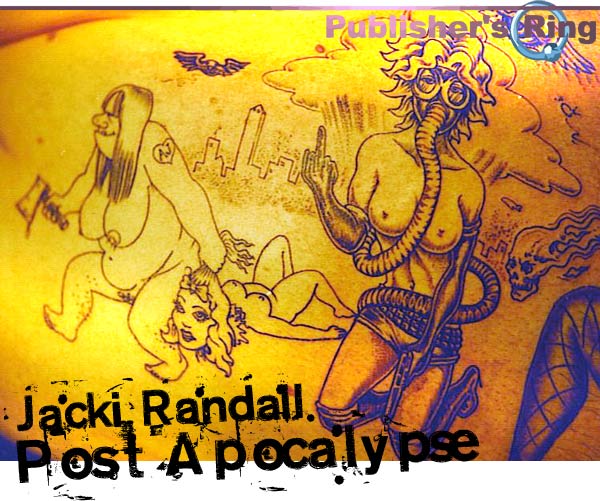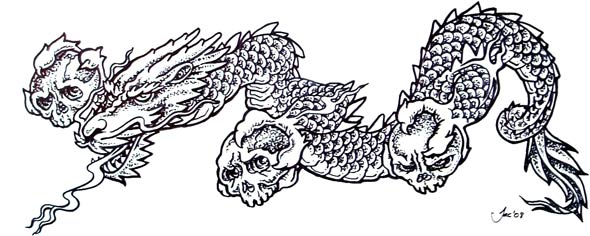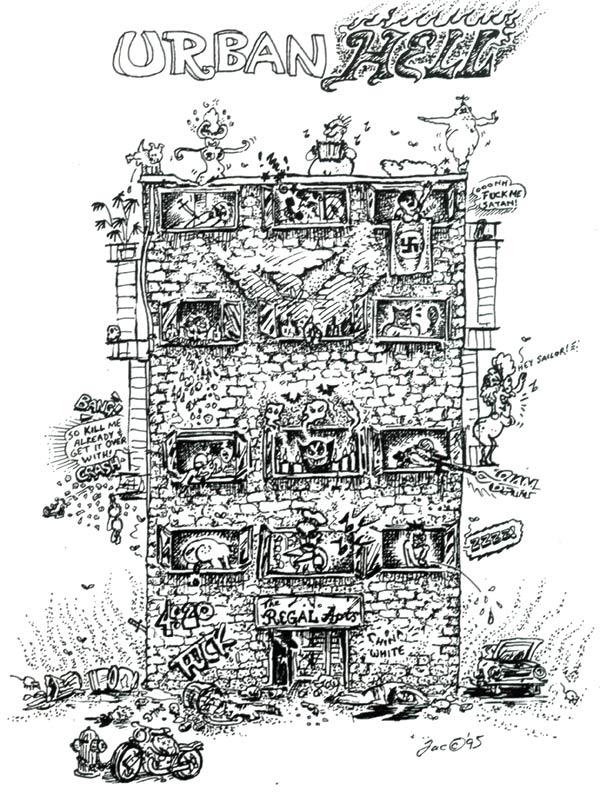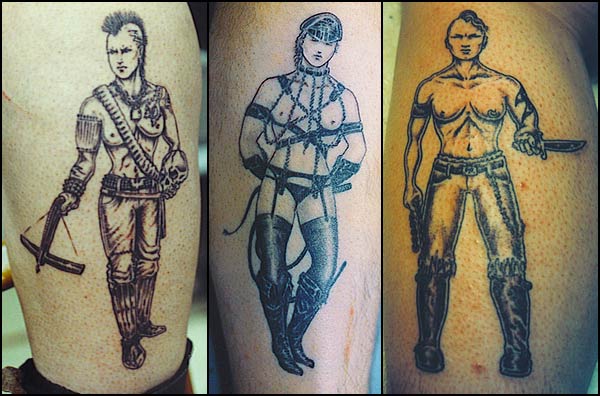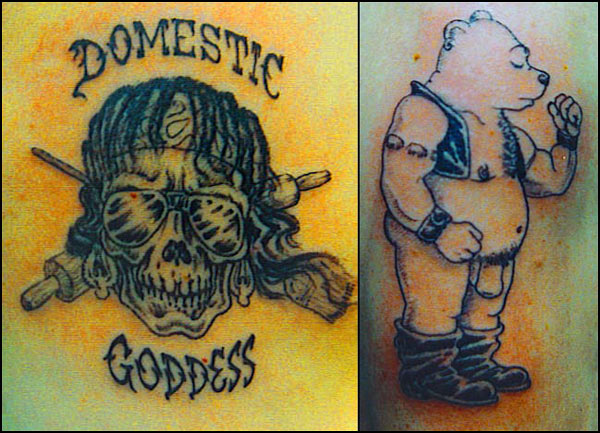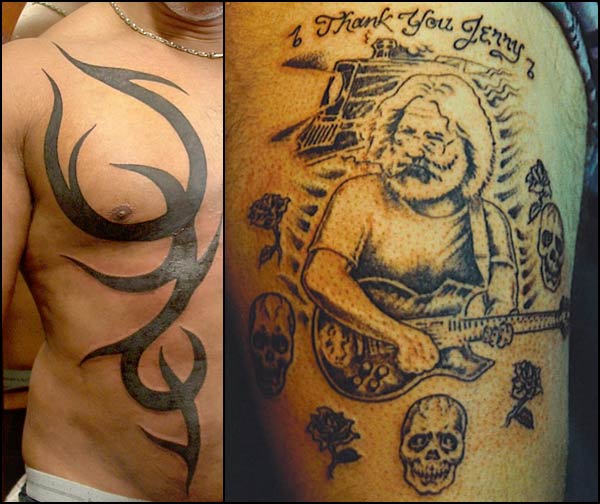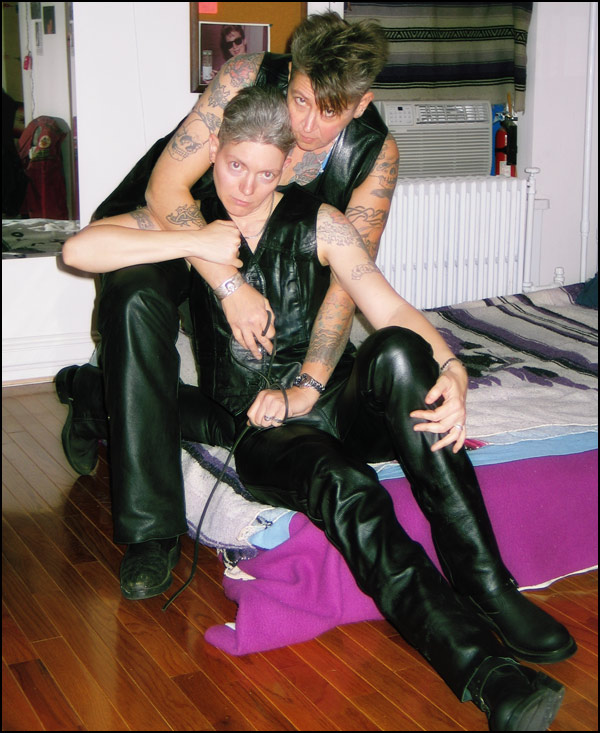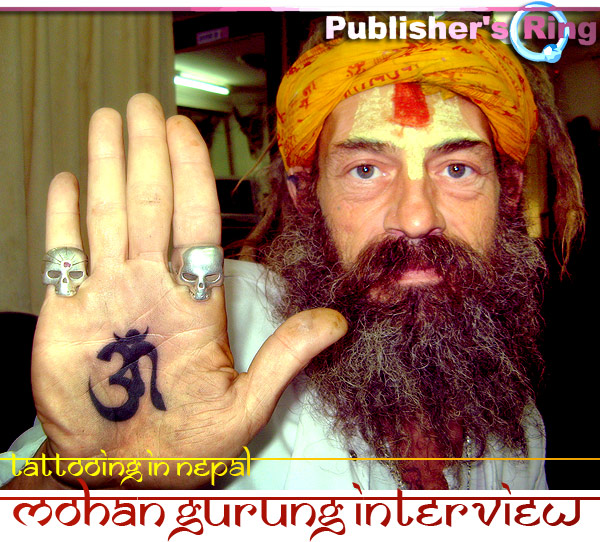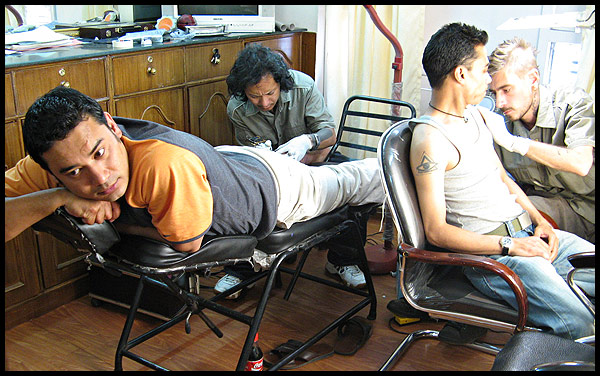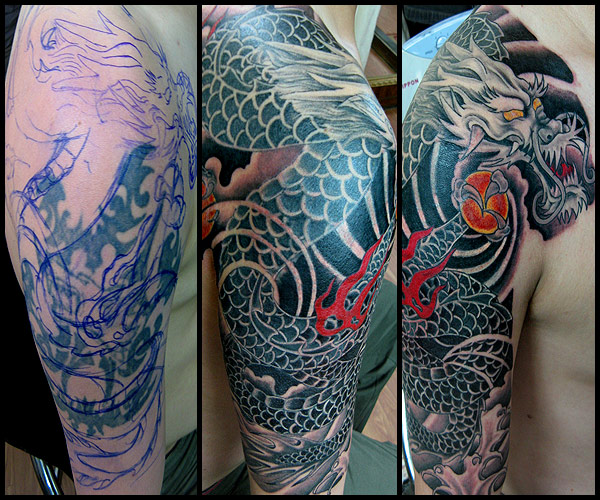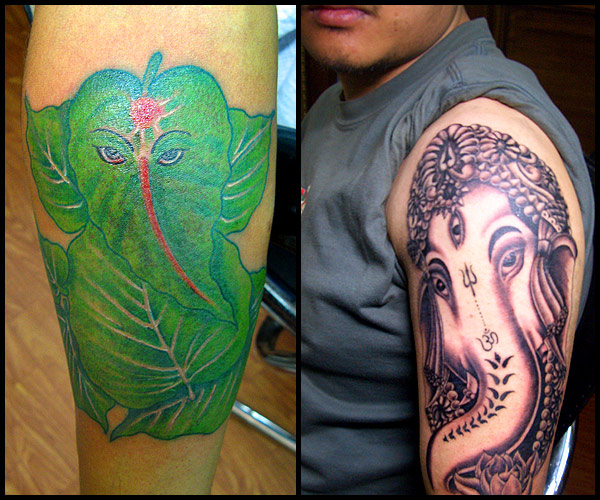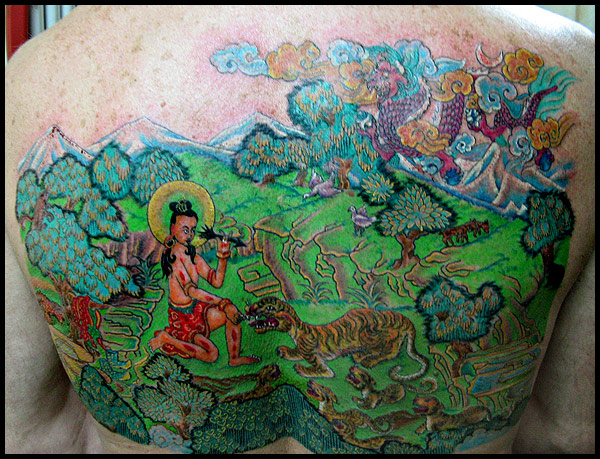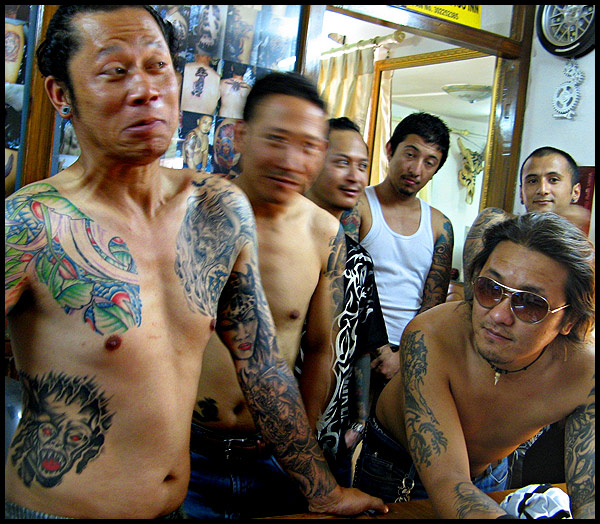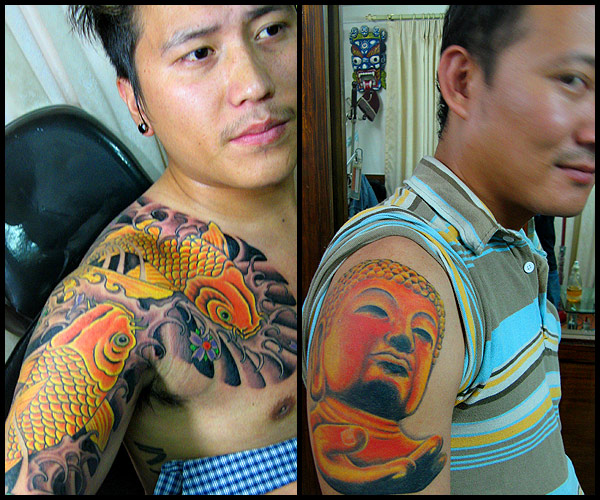|

After being turned on to quality piercing by a dedicated body artist after a series of body piercing and tattoo misadventures as a teen, John Joyce decided to set himself on a career as a piercer. With much hard work — and very long hours — he’s now the owner of Scarab Body Arts in Syracuse, NY, where he’s the head piercer as well as an experienced scarification artist. He’s run his shop and his life with the code his parents raised him with — “anything worth doing is worth doing well” — and he works with a focus on quality materials, quality service, and safety.

BME: Tell me a little about yourself?
I’m thirty years old and grew up just outside of Syracuse, New York. I’m the oldest of three, and had a very normal childhood. We grew up in the country, so most of my childhood was spent making forts in the woods, riding ATVs, or playing hide and seek in the corn fields surrounding our house. My father worked hard, and my mother stayed home to take care of myself, my younger brother, and my younger sister. I did very well in school, was on the wrestling team, and like all kids that grow up in the country I worked hard and partied just as hard. After high school, I went to college briefly for Architecture, and joined the Carpenters Union.
BME: What did you do before you got professionally involved in body modification?
I’ve been working for as long as I can remember. My father is a workaholic. He believes if you want something you should work for it, and you should never have your hand out unless you really need it and have done everything you can for it first, and he instilled that in both myself and my younger brother. When I was a kid, I used to spend summers working on farm in Canada. I learned all about hard work there. They had hundreds of acres in Dacre, Ontario. They milked their cows by hand, and did everything the old fashioned way. When I first started going up there they didn’t even have electricity. I would get up every morning and get on a 3-wheeler and go find the cows with a couple herding dogs, we would bring them back to the barn and that was the start of my day, then it was on to working in the hay, or the pigs, or the chickens, or whatever. They were some very long days, but I loved it. Any free time was spent playing on the lake, sitting around a fire, and just enjoying the outdoors.
When I was about fifteen I started working for a commercial flooring company on weekends or whenever there was a break from school. I started as a laborer, and by the time I was seventeen I was installing floors by myself and sometimes had guys working underneath me. This is when I joined the Carpenters Union. I worked at three different flooring companies by the time I was nineteen and did some warehouse work at one of them. I put a lot of hours in and even though I haven’t been doing it for eleven years, my knees are still a mess from it. I would look at the older guys that had been crawling around on concrete for twenty years, and they could barely stand. I knew I needed to figure something else out.
Since I had been reading blueprints for the last few years while doing floors, and I liked to draw and design things, Architecture seemed like a good thing to go to college for. I did very well in school and liked it quite a bit. There was a lot of creative freedom at first and even though it was a lot of work, it was fun. Then, they took that creative freedom away, and it just became tedious, and soooo much work. My hats off to anyone in an Architecture program at any University.
I had a bunch of other little jobs as well. I worked retail at a store that was a lot like Hot Topic, only before Hot Topic was around, as well as a Halloween store. I also served ice cream at a Friendly’s, and when I was very young I mowed lawns at a cemetery with one of my uncles.
BME: But these days you’re the owner of a tattoo and body modification studio.
Yes, I currently own Scarab Body Arts in Syracuse, NY. I do full body piercings, henna design, scarification, and I am also a NY State Licensed Massage Therapist. People can get in touch with me through the studio email, [email protected], the studio phone number is 315-473-9383, the studio myspace page is http://www.myspace.com/scarabbodyarts, and my IAM page is j_scarab.
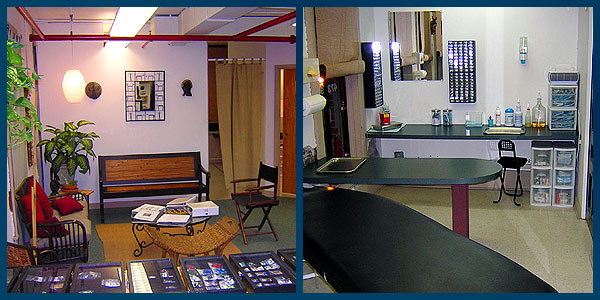
Scarab’s reception area and piercing room.
BME: When did you first become aware of body piercing?
I’m not sure when I first became aware of piercings. I was always around people with tattoos — my dad had two, my mom had two or three, and their friends had a couple. Other than ear piercings I never really saw anyone with piercings, and this was before you saw people with piercings every time you turn on the TV. I guess my first exposure to piercing in a broad sense was National Geographic Magazine. I grew up next door to my grandfather Ray — he was a man full of knowledge and stories.
Since this was before every house had at least one computer and was hooked up to the Internet, I did all my research for school papers at his house. He had not one, but three computers, can you believe that, haha? He also had two or three full sets of encyclopedias, and in chronological order he had every issue of National Geographic Magazine. Whenever I was doing research on outer space, or underwater sea life, or whatever, I would run across these pictures of people in Africa with stretched lip piercings, and stretched earlobes. I though it was amazing! I started going to see him every time he got a new issue to see the photos in these magazines. I was intrigued and the first time I saw a septum piercing in one of the photos, I couldn’t help but wonder how it was done, and how I could get one. It still to this day is one of my favorite piercings.
BME: Was that your first piercing?
No, my first piercing was my earlobe. I was probably thirteen or fourteen and had been bugging my mother about getting it done. She finally agreed, but only if I let my uncle do it for me. Since I was the oldest in my family, my uncle was basically my older brother, and I thought he was the coolest dude around. I mean, he introduced me to Pink Floyd The Wall, Led Zeppelin, KISS, Motley Crue, and Mountain Dew — all the good stuff, hahaha! Anyway, how could I turn that offer down? So, to my mother’s surprise, I said yes. My uncle took one of his piercing studs, soaked it in rubbing alcohol, and stuck it through my ear. The whole time my mom was telling me I could back out at anytime. I know it wasn’t the cleanest, safest way to to do it, but I wouldn’t have had it any other way. My favorite person in the world was giving me my first piercing, while listening to Led Zeppelin! It was my very own coming of age ritual, and I loved every second of it.
I still hadn’t met anyone with any professional piercings done, and hadn’t seen any, until my parents made the mistake of taking me to get my first tattoo. I started asking for a tattoo on my sixteenth birthday. I didn’t know what I wanted. I just wanted a tattoo — I needed a tattoo. My father had one, my mother had one, and all the adults I looked up to had one, so I thought I should have one too. When I turned seventeen, I got my first tattoo. My parents took me, and my mom got one with me. I had no idea what I wanted, and it was basically a flash shop, so I started looking at the walls. I figured since I was a scorpio, I would get a scorpion. Super original huh? Haha…
Well, I found a flash page that had some scorpions on it and I picked one out. The one I wanted had a rose in its claw, so I told the guy I wanted that scorpion without the rose. He told me “NO.” He said, “that scorpion comes with a rose — if you want one without a rose, pick a different scorpion.”
I was seventeen, maybe 115 pounds, and he was in his forties and probably 250 pounds. I didn’t know any better and man was that guy intimidating. So guess what, I got a scorpion with a rose. Fan-fuckin-tastic!!!! For about six months anyways. Then I hated it. But while I was there, for the first time, I saw a jewelry case full of body jewelry, and I saw a portfolio full of things that I had no idea you could pierce. This got my wheels turning and I couldn’t stop thinking about getting something — anything — pierced. Two weeks later I went back and got my tongue pierced. I asked him about piercing my septum, but he told me I wouldn’t be able to hide it until it was healed so I settled on a tongue. He didn’t ask for ID, he didn’t ask anything actually, just sit down, pierce and done. On the way home, the ball fell off the barbell and I almost lost the piercing. On top of that, it was not pierced straight at all. That was my first professional piercing, and the first of many not so great experiences.
BME: When did you decide you actually wanted to become a piercer?
Once I got my first piercing, I was hooked. I started looking into getting other piercings done. Unfortunately, even though my parents were fine with me getting tattooed, they didn’t understand my desire to get pierced. Out of respect for them, and maybe a little out of fear, I stuck to piercings that were easy to hide. And thus began my journey of bad piercing experience after bad piercing experience. I got my nipple pierced, which turned out to be placed far too deep. I got my tragus pierced, with jewelry that was far too large. On top of that, after the needle was in, the guy left the room to take a phone call before putting the jewelry in. After this I got my nipples repierced, and while one came out perfect, the other side was horribly crooked. I had a Prince Albert piercing done that was far too deep and done with jewelry that was too thin. It ended up tearing and bleeding like crazy. I even had problems when I went to get me lobes pierced at 10 gauge. The guy pierced over the one hole I had and it went well, but the other ear he lost transfer on. He reinserted the 10 gauge needle and lost transfer again! This happened four times before he got the jewelry in. He turned my earlobe into hamburger. There wasn’t a lot of information back then and I went through every studio around. I could go on, but I think you get the point by now. I was always taught that anything worth doing is worth doing well. Obviously the majority of piercers then didn’t grow up with that mentality. It wasn’t like today when you could walk into any number of $20 piercing studios to get that kind of service. I was paying just as much, if not more, than I charge today for piercings, and that is with much lower quality jewelry. I would say I was paying an average of $60 a piercing, sometimes more.
Eventually I was recommended to a new piercer that had just set up a small studio in Syracuse. It took me a while to find, since it was hidden in the very back of a salon with no sign outside. Once I found it, I decided to get my tongue repierced. I was completely amazed at the professionalism of this piercer. his knowledge, his demeanor, and his bedside manner — everything was top notch. I started having him redo all the piercings that I had done from other studios. He showed me a septum retainer and explained that I could start with that to hide it. Finally, I could get my septum pierced — the one piercing I had wanted for sooo long. I became a very loyal client and we became friends. I watched his studio grow into a new location, I watched him bring in a tattoo artist, and I spent as much time as possible in his studio.
One day he mentioned to me that he was thinking about apprenticing someone. I jumped at the chance. He told me that it was very important to him that whoever he brought in knew about the history of modern piercing, and that the person proved themselves. He gave me all kinds of articles and interviews to read. He gave me a copy of Modern Primitives, which I read cover to cover and was completely in awe of the people and the stories in it. He showed me PFIQ, and Body Play magazines. I loved all of it. He introduced me to BME, where I found even more information — I couldn’t get enough. I read about Fakir, Jim Ward and Gauntlet, Keith Alexander, Jon Cobb, Sailor Sid, Doug Malloy, and more… I figured a good way to prove I was serious was to sign up for either the Fakir Intensives in California, or the Gauntlet courses in NYC. I filled out the information for the Gauntlet courses, I booked a room at the Gramercy Park Hotel and I spent a lot of money getting the trip together. I received my Gauntlet handbook, read it cover to cover and couldn’t wait for start date. I took a bus to NYC, found my hotel and decided to walk around and find where the classes were scheduled to take place so I could get there on time first thing in the morning. I was only about a block and a half away, but when I got there the doors were chained shut and it looked abandoned. Being a Sunday I convinced myself that they were just closed on Sundays and all would be fine in the morning. First thing Monday morning, I show up at the address, and it’s still chained up. I waited around for a while and no one else showed up. This was my first time in NYC and I had no idea what the hell I should do. I went back to the hotel, made calls to every number I could find on the paperwork I had. Most of the numbers had been disconnected, but I eventually got a hold of someone. They told me that they were very sorry, and that I must of somehow fallen through the cracks because everyone was supposed to be notified that Gauntlet was no longer in business and the classes were canceled. I asked about getting my money back, and was told that everything was tied up in legal matters and it was just gone.
So here I was, in New York City for the first time, nothing to do, and stressing about all the money I was out. I found as many piercing and tattoo studios as I could and checked them all out. I went to Venus, I went to NY Adorned, I went to some place called East Side Ink (I’m not completely positive that’s right), but at this place I talked to guy named Brian who said he had just left a position at Gauntlet and was very sorry to hear that I got stuck in the middle. I called Shawn, the guy I was hoping would train me and he was also surprised at what had happened but said as soon as I was home, my apprenticeship would start. I guess I proved I was serious about getting into the industry.
I loved every second of my apprenticeship. I was there six, sometimes seven days a week, and on top of that I was working thirty to forty hours a week to pay my bills. I soaked up everything I could, and couldn’t of been happier.
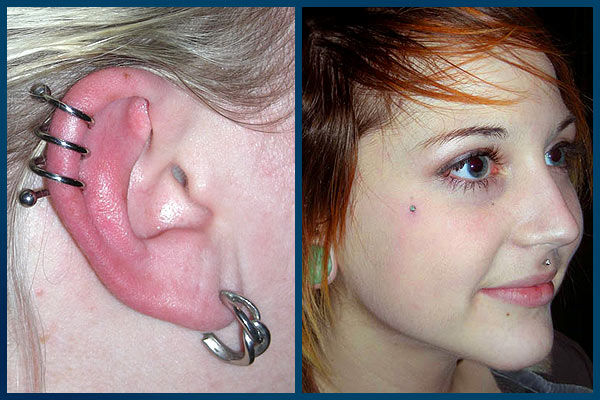
Two of very, very many happy customers.
BME: What did your family think about your decision?
Starting off, my family was apprehensive. My father especially just didn’t understand piercings. That being said, even though he voiced his concern constantly, he was still very supportive. His main concern was stability. He’s a family man and he worries a lot. Not getting a steady paycheck, not having health benefits, and the lack of job security really made him nervous.
Those concerns really bothered him when I started my own studio. Like I said, he worries a lot, and he knows how hard it can be to start a new business. Not having the stability of a paycheck every week, and probably never having health benefits, really made him nervous. But he supported me through all of it. He helped me with build-out of the new studio, he bought me lunch when I couldn’t afford it, and stood by my side through all the tough spots. I really can’t thank him enough. Now that my studio has been open for a while, he’s very proud. I took a chance, I worked my ass off, and I pulled it off.
BME: Now that you’re on your own, how do you continue improving your skills?
I’m always improving my skills as a piercer. I’ve been doing this for almost eleven years now and I still change how I do things. There is always someone better out there and you can always strive to be better. New techniques, new tools, new products, there is always something new to learn. I remember the first time I talked to Tom Brazda online. I had already been piercing for years at this point, but in one conversation he opened up so much too me. It made me realize how much more there was to piercing. That guy is a piercing nerd — he is so knowledgeable, so open, and so willing to share. There are so many people out there like that. They know so much and are so willing to help other piercers. I think that is why so many of us “old timers” are looked down upon for our view of the new breed of piercers. When I first started peircing I talked to everyone I could to gain information, and there are so many people now who are completely willing to share that info — Tom Brazda, Ron Garza, Brian Decker, Dave Gilstrap, Pat Tidwell, Brain Skelle, myself… The list is endless, but the newer breed of piercer doesn’t seem to care. They don’t look for that information before they try something new — they just jump in. The information is so much easier to get now, and they just don’t seem to care as much. The learning forum on IAM is a great example.
BME: Are you an APP member?
Oh the APP… where to begin…
I am not a member but I love the APP. That being said, I think whether you are an APP member or not, if you are a piercer you should make every effort possible to attend the APP conference. I spent years piercing in an area where I was the only one using implant grade internally threaded jewelry, and practicing proper aseptic technique. It was amazing going to the conference and being surrounded by piercers with the same ethics. I learned a lot, not just in the classes, but in the discussions that happened throughout the week, over food or over a beer. I made some great contacts, and great friends.
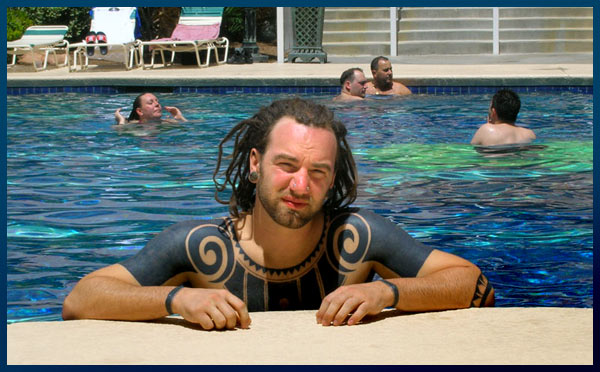
Relaxing at the APP convention.
BME: What secondary education do you have on top of your apprenticeship?
I keep my CPR, first aid, and bloodborne pathogens certificates up to date. On top of that, in 2006 I enrolled at the Onondaga School of Therapeutic Massage. I took Anatomy & Physiology, Pathology, Myology, and so on… We talked a lot about how the body heals, and it really went hand in hand with my piercing back ground. I graduated in December 2006 with the Salutatorian award. I would have had valedictorian but they dropped a couple points off my grade point average for missing time to go to the APP conference and for Scar Wars in LA. Going through massage school really got me excited again about learning new things. I also take classes yearly at the Association of Professional Piercers conference.
BME: Do you see piercing as an artform or as a craft?
I think piercing is more of a craft, at least on the technical side of it. But to be a good piercer you need to be able to put an artistic spin on it. You need to be able to look at someone’s face and be able to see if that Monroe piercing is going to look good where you have your mark, or maybe a millimeter or two to the side. Anybody can learn the skills to run a needle through someone and put jewelry in, but a good piercer takes placement and angles, and everything else into consideration to make it look as good as it possibly can.
BME: Do you think they’ll ever make a reality TV show about piercing? You could star on “Syracuse Steel” or something?
Oh man, I hope not. Who knows though — I never would of guessed that there would be shows like Miami Ink, or LA Ink, or London Ink, or Wherever else Ink. I don’t know about a show just on piercing, but I think sooner or later instead of just tattoo studios, there will be studios that offer both tattoos and piercing on these shows. Piercers meet some interesting people so I’m sure it’s only a matter of time. In fact, one of the artists that work with me, Mike Haines, has been saying for years now that they need to do a show on a whole studio environment. He started saying that back when American Chopper first started and the bike shows were just coming out — this was before Miami Ink and all those.
I’ve had so many great clients over the past decade. I had a woman who had been in the studio with her partner a few times and eventually asked me to pierce her as well. It was a very emotional piercing not only for her, but for me as well. She had been abused as a child, and since then had never had a male touch her or look at her without clothes on. Even her doctors were female. Watching me work with her partner eventually made her comfortable enough to ask me to work on her. We did a Christina piercing — there were many tears shed, but there were also many smiles and hugs when it was all over. It was great to be a part of her self discovery, her growth, and her reclaiming of a part of her.
I once had a 68 year old man come in for a Prince Albert after his wife died. He had always wanted one but his wife just didn’t understand. Out of respect for her, he never got it done. Once she passed away, he decided it was time. First and only piercing he had ever had, and he did fantastic. Smiled through the whole thing.
I also had a woman that was in her seventies. She had never had a piercing before and had always worn clip on earrings. Every year for Christmas and other holidays people would buy her all kinds of nice earrings, because they had no idea her ears weren’t really pierced. She decided it was time to wear some of those, so she came in. Even though it was just a set of 18 gauge earlobes, she was so happy and excited. She came in a couple times after that showing me some of the jewelry she had never been able to wear in the past, now in her ears.
I just recently had a couple come in for their 25th wedding anniversary. For their first piercings ever, she got a vertical hood and he got a scrotum piercing. It was great — they were a lot of fun, happy, and everyone left with smiles.
One of my absolute favorite clients is a guy named Aaron. He originally came to me about his ears. He had two stretched lobe piercings in both ears, and the skin between them was dieing due to poor circulation. I scalpelled the holes into one larger hole. He had a bunch of piercings done at other studios in the past and had problems with most of them. He was surprised at how easily everything healed up after I worked on him and he became a very loyal client. I have since done a number of procedures on him, including a bunch of piercings, dermal punches, and a lip scalpelling. He now wears a 9/16” labret plug in his lip. He was amazed at the difference the higher quality jewelry made and has had no problems with any of his piercings since having them done at my studio.
I really like being apart of people’s lives like that. So many people get piercings to mark an occasion, whether it’s a birthday, an anniversary, a new job, whatever, but it’s always a positive thing and it’s great to share that with people.

Star surface piercing projects.
BME: Do you have a favorite piercing to do?
I’ve been doing this a long time now, and at this point I don’t really have a favorite piercing to do. It’s more about the person now. I like working on people and making people happy. If the client was fun and we had a good time doing the piercing then that is what it’s all about now. It amazes me how many people come in to get a piercing or a tattoo for that matter, and are a complete asshole. I just don’t get it.
That being said, I still love septum piercings. I also really like philtrum piercings [central upper lip piercings], and my new favorite has to be high nostrils. I absolutely love the look of high nostrils.
BME: Do you have a least favorite?
If the person is an ass, then I’m not going to enjoy working on them very much. I really don’t mind doing any piercing but for me the least favorite piercings in general are tongue web piercings and upper lip frenulums — I just don’t like them.
BME: Which do you find the most technically challenging?
It’s hard to say. Everyone is built so differently; a piercing that is very easy on one person can be a complete pain on the next. Every piercing is going to be different, and as soon as you think you’ve seen every possible shape of a navel, a hood, an ear, or whatever, someone will come in with something completely new. I mean, try lining up a pair of nostrils on someone who broke their nose three or four times, or finding the perfect spot for a surface piercing where there is limited movement — it’s great! I like the challenge, it keeps me sharp, and keeps me growing as a piercer.
BME: Is this a career that you’d recommend to others?
I absolutely would recommend piercing as a career. But, you got to love piercing, and I mean really love it. The cool factor wears off, there isn’t a lot of money in it, the hours are usually long, and it’s not always a glamorous job. A lot of piercers work another job, especially during the slow season. I’ve been working at least six and usually seven days a week for most of the last ten years. I remember a year or two after I opened up, I took what I made, figured out the hours that I worked, and it worked out to $2.68 an hour. It’s really just the last two years that I’ve made even a decent amount of money, and it’s not a lot by any means, especially once you factor in the hours. So yeah, you have got to love it, because you’re not going to get rich being a piercer.
BME: Having gone through an apprenticeship yourself, have you apprenticed anyone?
I get people asking for apprenticeships a couple times a week. For the longest time I had no desire to apprentice anyone. I just didn’t see the work ethic, or the determination in the people asking that I had. I finally decided that I needed to bring someone in. He was someone I had pierced a few times, seemed really interested, and very eager. He reminded me a lot of myself when I first got into the industry. I explained he wouldn’t be making any money at all for about a year, and he wouldn’t be piercing anyone for at least six months. I explained the long hours he would be putting in between being at the studio plus working outside of the studio to pay his bills. Everything went really well, he was right on schedule with everything I had planned out, and we got along very well. He really seemed to fit in with the studio. I brought him to Vegas with me for the APP conference, introduced him to people that I had looked up to for years, we took classes together, it was great .Then about eight months in, he started slacking. After about a week of that, he just didn’t show up. People don’t realize that this isn’t an over night process, and it seems cool at first, but it’s a long road, and it’s not always fun, it’s not always exciting, and people just get impatient. I was very surprised when he stopped coming in — it caught me completely off guard. I guess somewhere in there he decided he wanted to be a tattoo artist instead, and piercing just wasn’t in him. I wish he had just talked to me about it, but he decided to just bail.
I waited a little over a year before I even thought about bringing in another apprentice. I had all kinds of offers, but I was really let down, and just didn’t want to deal with it. I recently brought in a new girl, Shelly. I’ve wanted a female piercer here for a long time. She was someone I had done a bunch of work on, proved that she was serious about piercing, took care of her piercings, and was always respectful and nice when she was in the studio. It always amazes me when people that don’t take care of their piercings, or who come in with an attitude ask me to apprentice them. Shelly just started her training in November, so she has a long ways to go still, but so far things are working out very well.
BME: I assume you’re in this for the long haul?
Man, I hope so! I just recently turned thirty and just had my ten year anniversary in this industry. That means a third of my life has been devoted to being the best piercer I can be. I still love piercing, and have no intention of quitting. I do however want to change my focus a little. I can’t keep working seven days a week — it’s just not healthy. Once Shelly is done with her apprenticeship, I’m hoping I can take some more time and devote it to doing massage therapy. I have a separate space for that now, but most of my time is still taken up by piercing. There are so many different modalities and techniques that it’s opening up a whole new area of research and training that I want to do. So, I’ll probably still be working seven days a week, hahaha…
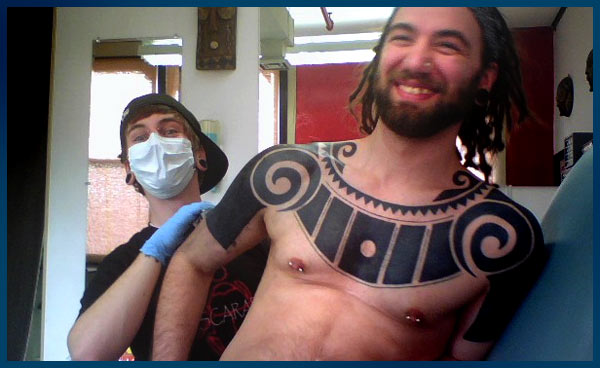
John getting tattooed.
BME: It seems like a lot of piercers seem to “burn out” after a decade and leave the industry… Why do you think that is?
I’ve noticed the same thing, and it’s something I worried about as I approached the ten year mark. Shawn, who I apprenticed under lasted about ten years in this industry and then basically walked away. For him, I think most of the stresses that pushed him out of piercing were from owning a business, not so much from piercing itself. That is something that I can definitely relate to now that I own my own studio. I love piercing, no matter how stressed I am, or what I’m stressed about — piercing actually calms me. The stresses from owning a business on the other hand just pile up. It’s a very up and down road, and you have to be able to look at the big picture and not focus on things on a daily or even weekly basis. If you can’t, you’ll drive yourself crazy. I think the biggest thing that most piercers end up walking away from is the seeming lack of responsibility from clients and from other piercers. It’s frustrating when you are doing everything you can to ensure the highest quality, safest, experience possible and all the client cares about is saving $5 somewhere else. The majority of piercers out there are clueless — they don’t know what type of metal they are using, or why they should be using something else, and they aren’t up to date with aftercare methods, and they have no idea what aseptic technique is. $20 or $30 piercing shops are popping up all over the place. There is no way you can offer a piercing at that price with high quality jewelry and be doing everything properly. It just isn’t possible. It gets very frustrating at times when you are doing everything you can to do things the right way and to educate the public, working longs hours for little pay, and it goes unappreciated. There have definitely been times when I’ve been at the point where I’ve been ready to just throw in the towel and go back to installing floors, or doing anything. But then I get one of my regulars walking into the studio and I remember why I love doing what I do.
BME: So that’s what keeps you coming back 🙂
I make people happy. People leave smiling and excited, and wanting to give me a hug because I pierced them. It’s a great feeling. Sure there are the asses that just want to save $5 and are rude, and don’t care about their safety, but fortunately, I have some of the most loyal clients around and they make it all worth while.
BME: Do you get many “weird” clients?
You know, I don’t meet nearly as many “weird clients” now as I did when I first got into this industry. But, I’m just going to change that from “weird”, to “interesting” — that sounds much better. When I first started piercing, there was still a huge percentage of slave-and-master and leather daddy clientèle coming into the studio. I still get some now, but not nearly as much. It opened my eyes very early on to how diverse people were and I loved it. I met so many different types of people. I’m not gonna lie — I kind of miss those days. It made the job a lot more interesting when I was doing a couple scrotum ladders a week, or large gauge PAs, or whatever, compared to now, when it’s just nostril after nostril.
One story comes to mind right away though, and I don’t know how many people can ever say they experienced this, so I feel pretty special, hahaha…
This was years ago, but we had a regular that was full of stories. He had been castrated, had a urethral reroute, had male breast implants, two inch earlobes (which were very very uncommon at the time), and so on… He still had a fully functional penis, and right below that where his scrotum used to be, he had an opening for a urethral reroute, and just below that he had a vagina made. He had a conversation with the owner of the shop about his procedures and offered to show him. They called me into the room, where I watched this man jerk off with one hand, insert a metal sound into his vagina with the other hand, and ejaculate out of his urethra relocation. Now that is Amazing Stuff!
BME: Oh — yes — he’s great! I know exactly who you mean (this individual is also featured in the ModCon book). We’ve already talked about this a little, but what do you think is it that makes you — or anyone — a good piercer?
I think a good piercer is someone who knows their limits. Knows when they need to do more research and knows when to say no. So often I see piercings done on people whose anatomy just doesn’t allow for that particular piercing. A good piercer needs to know more than just how to push a needle through the skin — anyone can do that. They need to practice and understand aseptic technique. I’ve seen piercers change gloves at the weirdest points during a procedure. The don’t understand when or why they should be changing gloves — they just know they are supposed to change their gloves at some point. A good piercer needs to know what they are putting in people. So many piercers have no idea what type of steel they are using. They don’t know the difference between “316L”, “316LVM”, or why they should be using “316LVM F-138”. A good piercer understands how the body heals and understands the aftercare they recommend, and knows how to troubleshoot if there is a problem. A good piercer is confident, but not arrogant. Most importantly, a good piercer is always learning.
BME: We talked about some of your oldest clients, but what have your youngest been? What’s your policy and feeling on age requirements?
The youngest person I have pierced was five — it was a set of earlobes. My insurance company has since changed their policy and I am now no longer allowed to pierce anyone under the age of fifteen.
It’s really hard to say, “at such and such an age, you are responsible enough to care for a body piercing.”
Everyone is so different that it just doesn’t work that way. I’ve had thirty year olds come in and act like complete asses. They don’t listen to me when I go over after care, they act very immature, and I can’t get them to stop text messaging long enough for me to go over anything with them. All they want to know is, is it gonna hurt, is it , is it, is it?? A couple weeks later they call back or stop in complaining that it’s not healing, and when I ask them a few questions, I find out they are doing everything the exact opposite of what I told them. Then I’ve had fourteen year olds come in, ask what the jewelry options were, ask me about sea salt soaks before I even mention it, ask about retainer options, and other jewelry once it’s healed, and a bunch of other good questions. Questions that show that they have done some research and are completely ready for the piercing and they heal with no problem at all.
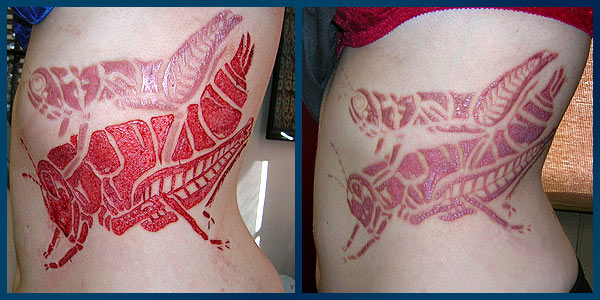
Large scale skin removal: grasshoppers mating, done in two sessions.
BME: On a technical level, what range of tools do you use to penetrate the skin?
I use needles, scalpels, and dermal punches — it really depends on the situation. In my opinion, it’s a matter of the right tool for the job. A 5mm dermal punched cartilage piercing is going to heal a lot easier than a 4 gauge needled piercing. I know this from experience because my conches were pierced with 4 gauge needles and immediately stretched to 2 gauge about eight years ago. Not only did this completely suck balls, but the healing took forever and was very problematic. I also have been using punches for all my surface work for a couple years now. I have found the punch and taper method to work far better for me. I know a few piercers who have great results with a needle, but for me the punch and taper technique has drastically improved the success rate of surface piercings that I have done. Anatometal’s new flat surface bars don’t hurt either [hey, Barry, maybe I can get some free ones for the plug, hahaha?].
I’m not a fan of using dermal punches on soft tissue like earlobes. I think in that instance, you want to leave as much tissue as possible for future stretching, so a scalpel is better off. Like I said, it’s the all about the right tool for the job, and a proper understanding of how to use that tool.
BME: What do you think of ear scalpelling?
I do quite a bit of ear scalpelling. Most of the time it’s to redirect the piercing. An example that comes to mind is on one the tattoo artists that work with me, Rick. He had his ears stretched to 1/2” from regular gunned piercings. They were drastically uneven — one was very far forward and one was very far back. I scalpelled them up to 3/4”, cutting one side only in the front and one side only in the back. It evened them out very nicely and he is now at 1 3/8”.
BME: How do you draw the line of what you will and won’t do?
If I think it has a good chance of healing, and not cause any problems, I’ll do it. I’m not into shock value and doing piercings just to get the photo, knowing they’ll probably be taking the piercing out in a couple days or weeks. Under the collar bone piercings completely freak me out. They go so deep into the body cavity and in some people there is a chance of hitting lung tissue. Most people don’t realize how far up your lungs actually go! Eyelid piercings just seem like a bad idea — I mean, come on!
It’s not that I don’t think people should be able to get these things done. I absolutely think they should be able to, but I’m not comfortable doing it. There is too much liability involved and if something goes wrong, even if it’s months later, that person could very easily come back after me. I love seeing people push the boundaries when it’s done safely, and the research has been done first, and the parties involved take full responsibility for their actions. I’m not just talking about whoever does the work, but also the person who gets the work. I’m reminded of two recent ModBlog posts. One was the 1/2” or whatever it was Achilles piercing, and the other is the implant gone wrong on the girls leg. That Achilles piercing was very impressive, and I absolutely loved it. I know a lot of piercers gave you a lot of shit for posting it, but I’m very happy you posted it. I love seeing what the human body can pull off, what can be done to it, and how far it can be pushed. That being said, I’m not going to pierce anybody’s Achilles, I can promise you that! The girl with leg implant is a great example of the client taking responsibility for her actions. Things can and do go wrong, and everybody was ready to jump on the practitioner and wanted him called out. She wanted an implant in her leg, she took the time to seek out a practitioner, she knew the risks, and unfortunately it didn’t work. She understood all of that before hand, and when it didn’t work, she didn’t get all pissed off and want this practitioner’s head on a stick. Even though it got pretty bad for her, she took responsibility for her choices. If the practitioner did something wrong, and was negligent in any way, and she could prove it, then sure, go after him. What people need to understand is sometimes things just go wrong, it’s not anybody’s fault — they just do. When that happens, you need to do exactly what this girl did, and just call it a loss, deal with the consequences, and move on.
Sometimes shit happens, and it doesn’t mean you get to sue somebody or are entitled to anything. We’re pushing limits here, and there are risks with those limits, know them beforehand and be willing to take them, for better or for worse.
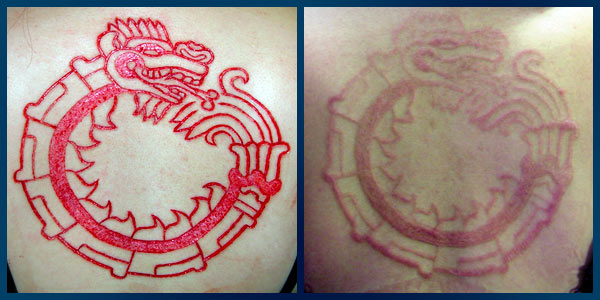
Fresh and well-healed scarification by John Joyce.
BME: Over the ten years you’ve been in this industry, how has the public attitude toward piercing changed?
Piercings are definitely becoming more common and more acceptable. Sure it can still be a hard to get a job with a lot of facial piercings or 1 inch earlobes, but it’s a hell of a lot easier than it was ten or even five years ago. I’m getting a lot more people in their thirties and forties who work in office settings getting nostril piercings. I still hear people complain all the time about how they don’t get treated with respect because of their piercings. While I’m sure there are times when that is true, I think a lot of it is also in how you carry yourself and how you present yourself. Ten years ago I had a lot of visible piercings, far more than I do now. This was definitely not the norm back then, and I never felt like I was being treated poorly. I treated people with respect, and they gave it back to me. If you act like a punk kid, then you’ll be treated like one, whether you have piercings or not.
BME: Are you still getting piercings yourself?
I have settled down a lot with my piercings. Many have been retired, but I still have quite a few. There are a few things I still want to do, my high nostrils being one of them. Unfortunately, I do not have a lot of faith in the majority of piercers around here. This means I either travel the four and a half hours to a piercer I trust, like did for my 4 gauge nostrils, or I wait until I’m done training Shelly. What could be a better test for an apprentice than to pierce the one who trained her?
BME: Finally, is piercing a trend?
Well, when I started my apprentice just under eleven years ago, my grandmother told me that piercing was just a trend, a fad, and then what was I going to do? When I opened my studio, just over six years ago, she told me the same thing — she still loaned me money to get started though. So, is piercing a trend? Sure, just like tattoos is a trend — a couple thousand year old trend!
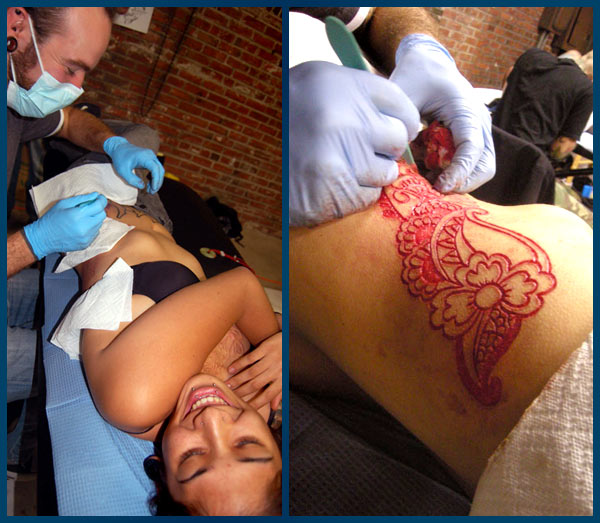
John cutting at the ScarWars convention.
BME: A lot of piercers seem to move into scarification and implants in their later careers, yourself included.
I’ve been performing scarification, both cutting and branding for about six and a half years. It’s just within the last three years that I’ve really become comfortable with my cutting skills, especially removal. I really love doing scarification pieces, and while I don’t get to do it as often as I would like, I’ve been fortunate enough to do some great pieces on some great people. Shawn, the guy that apprenticed me for piercing had taken the Branding Intensives offered by Fakir. He actually did quite a few brandings and I learned a lot from him. Implants are something that I was very interested in for a while. I got into them a little, got a lot of info, and performed a couple on close friends. The few that I did healed up very well, and are still in to this day, but doing them stressed me out tremendously. I still perform genital beading, but for now I’m not really interested in doing transdermal or subdermal implants.
BME: Tell me about how you became proficient in doing scarification?
Shawn taught me quite a bit and I eventually started doing some brandings under his supervision. He eventually started doing cuttings on some of his clients. This, he didn’t master quite as well as branding, and even though he wasn’t what I would call a good cutting practitioner, I still learned a lot from watching him. Eventually, one of the girls he had worked on asked me to redo a piece he had done on her.
I ended up doing a few pieces on her, simple line work and geometric stuff. For a long time that was all I did. I couldn’t have asked for a better person to try new techniques on. She was very open and took the process like a champ. I tried different blades on her, found what worked best, and slowly started doing more intricate pieces. For the first couple years, all I did was single line work — no removal, and mostly geometric shapes. I constantly checked portfolios of artists I respected, and I still do. People like Ron Garza, Blair, Steve Haworth, and Lukas Zpira. Later I learned about Ryan Ouellete, Brian Decker, Wayde Dunn, Jessie Villemaire, Dave Gillstrap, and so on. These guys were doing amazing work, and some of us were learning around the same time so we were all growing together. I asked questions about blade types, about aftercare; I asked anything I could think of. Shawn Porter started the Scarification Forum and I asked if I could participate. This was a great place to get info and share photos, and get critiqued. I was invited to work at Scar Wars I [scarwars.net] in Philly, and unfortunately I had to back out because I had just started massage school, but I didn’t pass up the opportunity to go to Scar Wars II in LA. I did a few pieces there, including a collaboration with Brian Decker. It was great watching everyone work, and I learned a lot. I did quite a few pieces at this years Scar Wars III in Philly, including another collaboration with Brian, and I got to work alongside Wayde.
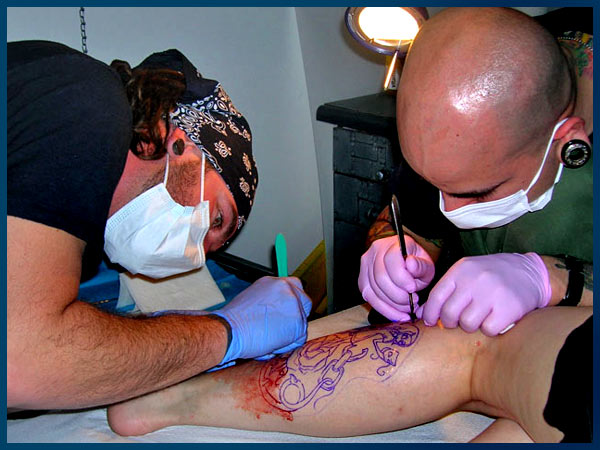
Collaborating with Brian Decker on a cutting.
Something I was really surprised about at this past Scar Wars III in Philly was the lack of learning artists in attendance. There are so many people in the Scarification Learning forum, and there are even more people offering scarification that have a long way to go. I can’t stress enough how much knowledge there is to be gained at an event like that. It’s an opportunity to watch the best of the best of the best work, and pick their brains. It’s an unbelievable opportunity, and I think it is really foolish to miss it. It goes back to what I was saying about some of the new piercers. It seems like the easier the information is get get, the less people want to take advantage of it!
BME: What types of scarification do you do?
I do strike and cautery branding, as well as single line cutting, removal, and just started with some of the cross hatch shading technique. That is something I’m still experimenting with. I do far more scarification by cutting than I do by branding though.
BME: I know you have Architecture experience, but what’s your artistic background and what is your design process?
I’ve been drawing for as long as I can remember. In high school I spent a lot of time in the art room, even though I wasn’t enrolled in art classes. One of the instructors was even convinced I was one of his students. I started taking design classes my junior year in high school, and then enrolled in Architecture courses in college, so most of my formal training has been more in design than art. I’ve always been surrounded by artists though. Growing up, my uncle who was an amazing artist. He did a lot of pen and ink, and some three dimentional sculptures. I spent a lot of time with him and tried to emulate his work. Once in high school, most of my friends were art majors, which is why I spent so much time in the art room. And of course for the last ten years, I’ve been working side by side with different tattoo artists.
My process for coming up with design for scarification is very similar to a tattoo artist. I do a consultation with the client, take some notes, and talk size and placement. Then I use all sorts of reference material and do some sketches. I always try to keep placement and body movement in mind, so I can place the piece so that it works and flows with the body. Sometimes, I’ll have one of the tattoo artists give me a hand with a design, and we all kind of work together.
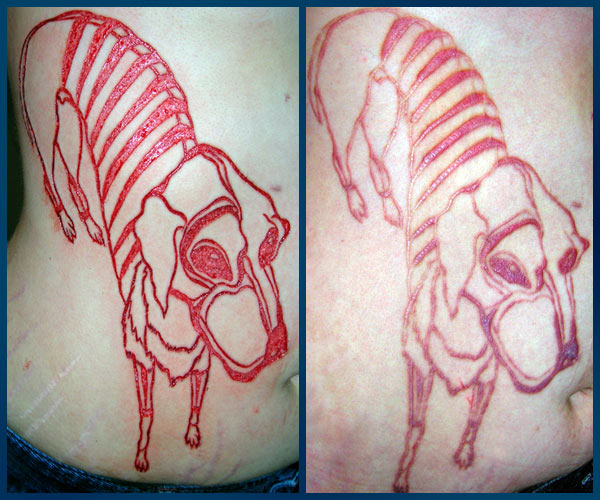
Cutting with skin removal, fresh and healed.
BME: Is your scarification clientèle at all different from your piercing clientèle? Is it something you offer commercially?
The clientèle really isn’t any different. Most of the people I have done scarification on were originally my piercing clients. I do far more scarification on woman than I do on men, but that’s true of piercing as well. For a long time I just offered it to people I knew, but now I offer it commercially. It’s not a huge percentage of my income, and in fact, If I stopped doing scarification all together it wouldn’t really affect my yearly income. More and more people are asking about it, so hopefully that will change.
BME: What does the future hold for scarification in your opinion?
I don’t think it’ll ever be common enough for me to do it exclusively, at least not during my career, but I do think it’ll become more common. In the past it was mainly just people who worked in the industry, or who were pretty close to someone in the industry that got scarification done. At this point I’ve worked on a very wide range of clients. I did a branding on a guy’s shoulder who was in his mid thirties and who drove from Connecticut to get it done. He was very conservative looking guy, and his only real concern was if it would affect his golf swing. I’ve worked on a girl who had some existing scars she wasn’t happy with, and wanted to make it a more positive thing. I’ve worked on people who weren’t comfortable getting tattoos because the thought of a foreign substance being put in their skin made them uncomfortable. Scarification has come a long way since I started doing it. The work being done now has so much more detail in it than it did back then. Especially now with the new shading technique pioneered by Dave Gilstrap, which Wayde Dunn has really ran with as well. It’s making scarification more appealing to a wider range of people.
BME: Thanks for taking to us about all this!

Shannon Larratt
BME.com
|







